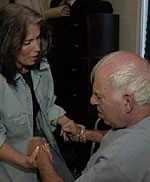Last Updated on September 19, 2024
Contents
- What is Epilepsy?
- What causes Epilepsy?
- What are the symptoms of seizures?
- What are the different types of seizures?
- Medication
- Myths and Misconceptions about Epilepsy
- What to do If You Witness a Seizure
What is Epilepsy?
Epilepsy is a common condition associated with the onset of seizures – the result of sudden, brief changes in how the brain works. These changes are the result of brief, excessive electrical discharges in a group of brain cells (neurons) that cause varying symptoms depending on the area of the brain in which the activity takes place.
What causes Epilepsy?
The cause of epilepsy is not known in 75% of children and 50% of adults. The following factors increase the risk of epilepsy:
- Rain tumor or stroke
- Head injury of any type of – seizure risk increases with the severity of the head trauma
- Brain injury to an infant during delivery
- An expectant mother suffering an injury or infection may affect the brain development of the unborn child, increasing the risk of epilepsy
- Meningitis and viral encephalitis (brain and spinal cord infections) increase risk of seizure after the infection is cleared
- Abuse of alcohol can lead to epilepsy
What are the symptoms of seizures?
What are the different types of seizures?
Seizures can be partial or focal (arising from a particular area of the brain) or generalized (involves the whole brain). Absence seizures (sometimes called petit mal) and generalized tonic-clonic seizures (sometimes called ‘grand mal’) are examples of generalized seizures. Simple partial seizures and complex partial seizures (also called psychomotor or temporal lobe seizures) are examples of partial of focal seizures.
What are the symptoms of seizures?
Absence Seizure – a blank stare, beginning and ending suddenly, lasts only a few seconds, most common in children. May be also involves rapid blinking and/or some chewing movements of the mouth. The person is unaware it is happening and returns to full awareness once it has stopped.
Generalized Tonic – Clonic Seizure – A sudden cry, a fall, and/or rigidity, followed by muscle jerks, shallow breathing or temporarily suspended breathing, bluish skin and possible loss of bladder or bowel control. Usually lasts a couple of minutes and then normal breathing starts again. There may be some confusion and/or fatigue followed by full return to consciousness.
Simple Partial Seizure – Jerking may begin in one area of body, arm, leg, or face but the person stays awake and aware. Jerking may spread from one area of the body to another. May be includes seeing or hearing things that aren’t there, or unexplained emotions.
Partial Complex Partial Seizure – Usually starts with a blank stare, followed by chewing, then random activity. The person seems unaware of his/her surroundings and is unresponsive. There is no memory of what happened during seizure.
Medication
There is no cure for epilepsy. However, about 70% of people with epilepsy can become seizure-free by using a single antiepileptic (anticonvulsant) medication. Others can reduce the frequency and intensity of their seizures but may require more than one medication.
- It is very important that the correct levels of medication in the blood are maintained by taking the medication exactly as ordered. Since people metabolize drugs at different rates, some medications require that blood levels be followed with lab testing.
- Common anticonvulsant medications include phenytoin, valproic acid, divalproex sodium, clobazam, Phenobarbital, primidone, diazepam, carbamazepine, topiramate, and ethosuxmide.
- It is extremely important to never stop taking anti-convulsant medications suddenly. This can result in status epilepticus, which is a very seizure that is potentially life threatening and results in one seizure occurring immediately after another.
- Minor side effects are common at the beginning of treatment with anticonvulsant medications, but usually go away over time. Common side effects include drowsiness, irritability, nausea, rash, clumsiness and in children, hyperactivity.
- Contact a doctor immediately if you notice any of the following symptoms which mean that the drug is negatively affecting your blood cells: fever, sore throat, mouth ulcers, easy bruising, pinpoint bleeding under the skin, or any other change in physical well- being.
- Anticonvulsants are well known for their potential to interact with other medications. Be sure to keep a current list of all medications you take (including those that don’t require a prescription) and show it to all health professionals caring for you.
Myths and Misconceptions about Epilepsy
- Since people assume that you should restrain a person having seizure. This is never the case; the seizure needs to run its course.
- Many people think that something should be forced into the mouth of someone having a seizure. It is important NOT to put anything in the mouth as it may cause chipped teeth, punctured gums or might even break a jaw. One should just gently roll the person on one side to protect him/her from injury.
- Some assume that people with epilepsy are disabled and can’t work. In truth, people with seizure disorders are found in all walks of life and at all levels of society. Ability and intelligence are not affected by epilepsy.
- There is a false impression with some that epilepsy only occurs in children. In fact, people over the of 65 have seizures as often as children do.
What to do If You Witness a Seizure
The following principles should be kept in mind if you are present when someone has a seizure:
- Keep calm and help the person to the floor if necessary.
- Loosen any clothing around the neck.
- Remove any sharp objects that could cause injury.
- After the seizure subsides, turn the person on one side so saliva can flow from the mouth.
- DO NOT put anything in the person’s mouth.
- If you know the person having the seizure has epilepsy, an ambulance is probably not necessary if the seizure lasts less than 5 minutes.
- GET MEDICAL HELP IMMEDIATELY if the seizure lasts more than 5 minutes or if you don’t know if the person having the seizure has epilepsy or if the person has diabetes, or is ill or pregnant.
- After the seizure, talk gently with the person to comfort and reassure him/her. Help the person to reorient him/herself.
Written by: Winter Rose
Copyright © by www.siyalla.com
[Earlier our website was www.ehealthut.com]



